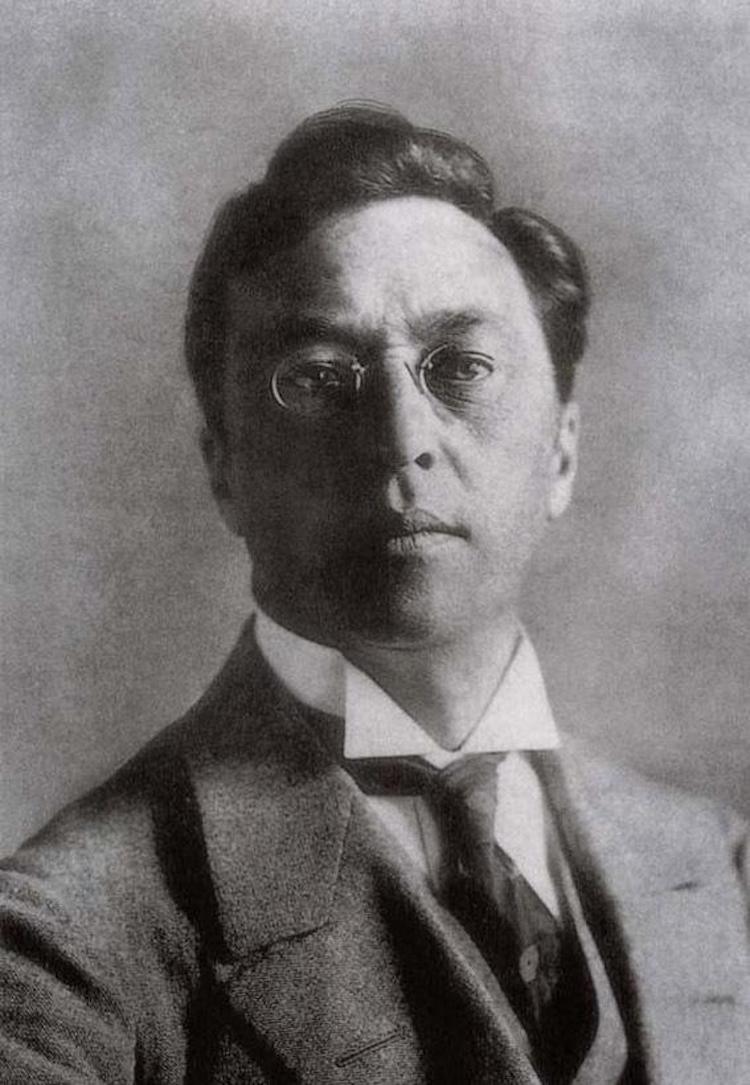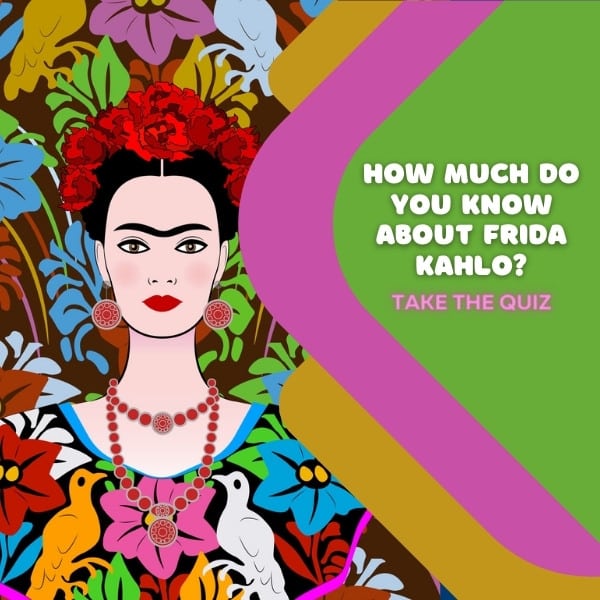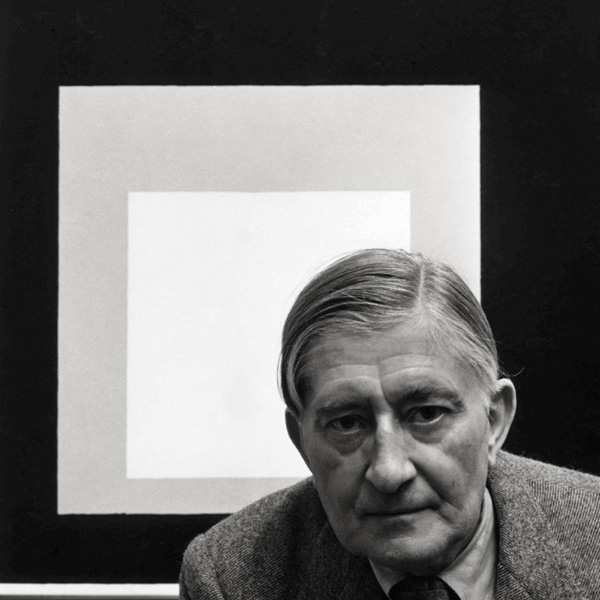
Photo: russn_fckr
Today, abstract painting is viewed as a key style contained in the Modern Art movement. Pioneered by many forward-thinking 20th-century painters and celebrated for its avant-garde aesthetic, the abstract genre represents a pivotal moment in modernism.
As a catalyst for contemporary art, abstract painting rejected the “rules” of traditional art. Rather than focus on figurative and representational depictions, abstract painters placed emphasis on color, composition, and emotion. Similarly, instead of concentrating solely on the completed works, these artists placed importance in the process. Here, we explore 10 famous abstract artists, paying particular attention to their unique styles, differing approaches, and enduring contributions to abstract art.
Famous Abstract Artists
Wassily Kandinsky (1866–1944)

Portrait photograph of Wassily Kandinsky (Photo: Wikimedia Commons, Public domain)
Russian art theorist and painter Wassily Kandinsky is celebrated as a predominant pioneer of the abstract genre. Kandinsky's practice was dictated by “inner necessity“—a concept that called for artists to be “blind to ‘recognized' and ‘unrecognized' form, deaf to the teachings and desires of his time.” This avant-garde approach culminated in compositions that forewent figurative forms for geometric shapes, floating lines, and vibrant colors.
Famous works of art: Der Blue Reiter (1903), Composition IV (1911)
Piet Mondrian (1872–1944)

Portrait photograph of Piet Mondrian, 1899 (Photo: Wikimedia Commons, Public domain)
Piet Mondrian, a Dutch artist, was a leading figure in the De Stijl movement. De Stijl, also known as neoplasticism, focused on the simplification of form and tone—namely, on the use of lines and primary colors. This aesthetic pair was intrinsic to Mondrian's practice, as he believed that “everything is expressed through relationship. Color can exist only through other colors, dimension through other dimensions, position through other positions that oppose them. That is why I regard relationship as the principal thing.”
Famous works of art: Composition with Red, Blue, and Yellow (1930), Broadway Boogie-Woogie (1942)
Kasimir Malevich (1878–1935)

Kazimir Malevich, “Self-Portrait,” 1910–1911 (Photo: Tretyakov Gallery via Wikimedia Commons, Public domain)
Russian artist Kazimir Malevich honed his painting skills in numerous styles, but ultimately became best known for his Suprematist abstract art, which relied on geometric shapes. Black Square is his most iconic painting, which he replicated four times with slightly different variations.
Famous works of art: Black Square (1915)
Clyfford Still (1904–1980)
View this post on Instagram
American artist Clyfford Still helped elevate Abstract Expressionism into a prominent art form. Though Still originally produced representational pieces, he transitioned to complete abstraction by the 1940s. His work is characterized by large-scale canvases covered in jagged formations of juxtaposed color. Though this unique painting style would dominate Still's portfolio, he did not want his works to revolve around traditional artistic sensibilites. “I never wanted color to be color. I never wanted texture to be texture, or images to become shapes. I wanted them all to fuse together into a living spirit.”
Famous works of art: 1957-D No.1 (1957)
Willem de Kooning (1904–1997)

Willem de Kooning in his studio, 1961. (Photo: Smithsonian Institution Archives via Wikipedia)
Dutch-American painter Willem de Kooning is celebrated for his dynamic, gestural style. He played an integral role in the Abstract Expressionist movement. But unlike other artists of the style, De Kooning never fully abandoned depicting the human form. He bounced between abstract and figurative art throughout his career, developing his own signature style of painting that fused Cubism, Surrealism, and Expressionism. De Kooning is perhaps most famous for his series of Women paintings—a then-controversial body of work that represents a deconstructed image of the female form in vivid, expressive brushstrokes.
Famous works of art: Woman III (1953), Interchange (1955)
Mark Rothko (1903–1970)
View this post on Instagram
American painter Mark Rothko revolutionized abstract art by becoming one of the pioneers of color field painting. His pieces, feature formally-composed blocks of color. Although today, Rothko is renowned as a major abstract artist, he did not see himself in that light. “I'm not an abstractionist,” he noted. “I'm not interested in the relationship of color or form or anything else. I'm interested only in expressing basic human emotions: tragedy, ecstasy, doom, and so on.”
Famous works of art: Untitled, Black on Gray (1969)
Franz Kline (1910–1962)
The paintings of Franz Kline feature fluid, thick brushstrokes that intersect, overlap, and interact with one another. Ranging from black-and-white pieces that play with negative space to colorful compositions full of energy, his paintings illustrate his evolving aesthetic.
Famous works of art: Painting Number 2 (1957)
Jackson Pollock (1912–1956)
View this post on Instagram
American artist Jackson Pollock played a major role in the rise of Abstract Expressionism, a post-war movement characterized by spontaneous creation, energetic composition, and gestural paint application. To produce his iconic action paintings, Pollock would drip, pour, and splash industrial paint onto large-scale canvases strategically set on the floor.
Famous works of art: No. 5 (1948), Autumn Rythm: Number 30 (1950)
Agnes Martin (1912–2004)
Agnes Martin is recognized for her minimalist approach to abstraction. Unlike the chaotic canvases of her peers, her pieces employ muted colors and simple compositions to convey quiet contemplation. Given this tranquil aesthetic, it is not surprising that many of her paintings—which she describes as “grids”— are rooted in her love of nature. “When I first made a grid, I happened to be thinking of the innocence of trees, and then a grid came into my mind and I thought it represented innocence, and I still do, and so I painted it and then I was satisfied. I thought, ‘This is my vision.'”
Famous works of art: Untitled Number 5 (1975)
Helen Frankenthaler (1928–2011)
View this post on Instagram
Helen Frankenthaler, a New York-born artist, also worked in the Abstract Expressionist style. Specifically, she used a soak stain technique to create her collection of Color Field paintings. To create these watercolor-like works of art, Frankenthaler employed paint diluted with turpentine, which resulted in translucent washes of color. To Frankenthaler, the unpredictable nature of the process is just as important as the completed canvas. “You have to know how to use the accident, how to recognize it, how to control it, and ways to eliminate it so that the whole surface looks felt and born all at once.”
Famous works of art: Mountains and the Sea (1952)
Frequently Asked Questions
Who is a famous abstract artist?
Wassily Kandinsky, Piet Mondrian, and Mark Rothko are three abstract artists who had a profound influence on the course of modern art.
Is Picasso an abstract artist?
While most artists are known for one iconic style, Pablo Picasso changed several times during his lifetime. Some of his most distinct periods include the Blue Period, Cubism, and Surrealism.
What does an abstract artist do?
Rather than focus on figurative and representational depictions, abstract painters placed emphasis on color, composition, and emotion.
This article has been edited and updated.
Related Articles:
Art History: What is Contemporary Art?
Artist Creates Larger-Than-Life Abstract Floral Paintings Bursting with Color
























































































